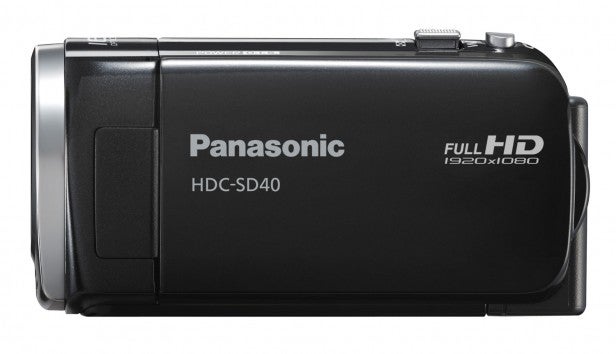

HDC SD40 REVIEW MANUAL
There's also a manual switch for a lens cover. Inside the LCD recess are the auto/manual, image stabilization, video light and power buttons, along with the SD card slot and USB, AV/Multi and HDMI connectors. A big switch on the right toggles between record and playback modes. It's got a typical design record button falls under your right thumb (when you hold it at eye level via the grip), and there's a zoom switch and photo button on top. The problem there, however, is that the screen and the controls on the bezel-menu, enter and four navigation buttons-are so small that it can be awkward using the menus or manual controls.
HDC SD40 REVIEW HOW TO
For exposure, though, as long as you know how to use them the camcorder really benefits from the manual settings, which include shutter speed and iris control, as long as you know how to use them. In auto mode, you have to enable backlight compensation or even shots that aren't really backlit will underexpose, but you don't always want that setting applied universally. That means pretty good but occasionally frustrating autofocus I frequently had to "nudge" it to focus on the right subject rather than the background by focusing on something completely different, then moving it back to the desired subject.

It performs pretty typically for its class as well. It also has the dynamic range of a budget model, with a lot of clipping in the highlights.
HDC SD40 REVIEW FULL SIZE
But when watching it on a big TV screen or even at full size on a 24-inch monitor, picky videographers will note the smeary detail rendering and compression artifacts in good light and even more of a loss of sharpness and color noise in low light. Low-light video may also be acceptable when viewed like that. When it's shot in good light and displayed on a midsize screen (say, under 40 inches), or scaled down to half size, it's perfectly acceptable. A total of six people can be registered, and up to three people at a time can be detected when shooting.There are some circumstances under which the video looks OK. Names can also be registered and displayed on the LCD while shooting. It is extremely useful for capturing someone's face in a group. It continues to track the subject as he or she moves anywhere within the LCD frame, making it ideal for video shooting. The zoom achieves even greater image detail.The iA function includes face recognition feature that recognizes the faces of previously registered subjects, and automatically optimizes the focus and exposure for those special people.
HDC SD40 REVIEW PRO
also features an Active mode to assure clear, beautiful images across the entire range from wide angle to telephoto.The 12x optical zoom lens is further enhanced by Intelligent Resolution technology in the Crystal Engine Pro image-processing circuit, to produce the 20x intelligent zoom. is able to correct it about five times more effectively. system could not sufficiently eliminate low-frequency hand-shake, the Power O.I.S. (Optical Image Stabilizer), which uses gyrosensors to detect hand-shake and moves a corrective lens to adjust the optical axis and eliminate blurring, has further evolved. It minimizes afterimages and flickering caused by subject motion and renders crisp, detailed images.The O.I.S. The large-diameter F1.5 Leica Dicomar lens Crystal Engine Pro and this high-sensitivity sensor have improved the efficiency of light gathering, increased sensitivity, and reduced noise by one-half to provide users with bright, low-noise recording even in dim lighting.The 1080/50p recording conveys about twice the information of 1080i recording to produce the ultimate beauty in image quality, exceeding even conventional Full-HD images. This image sensor offers beautiful images with significantly better color quality, detail and gradation than the 1MOS sensor system.


 0 kommentar(er)
0 kommentar(er)
